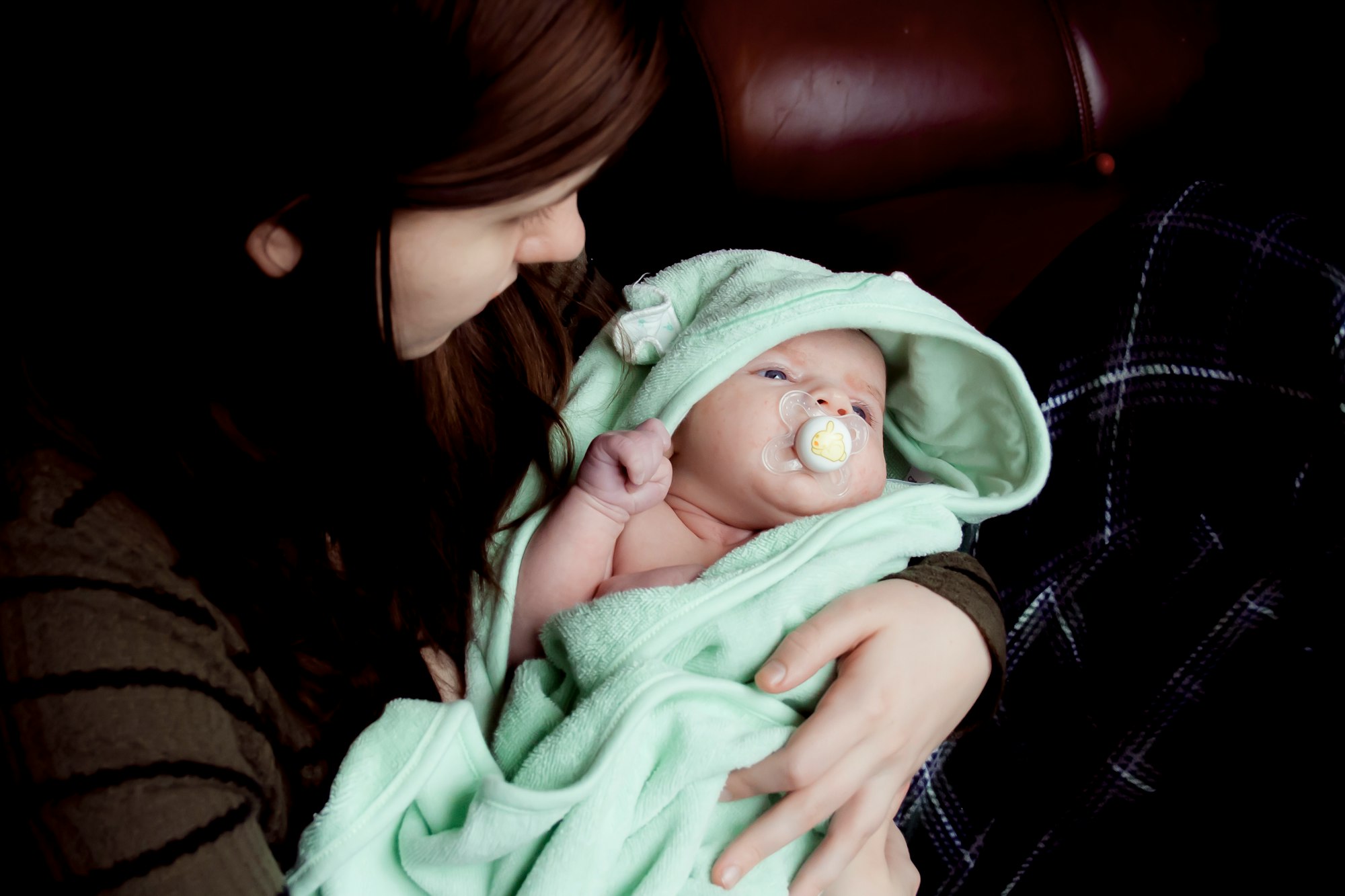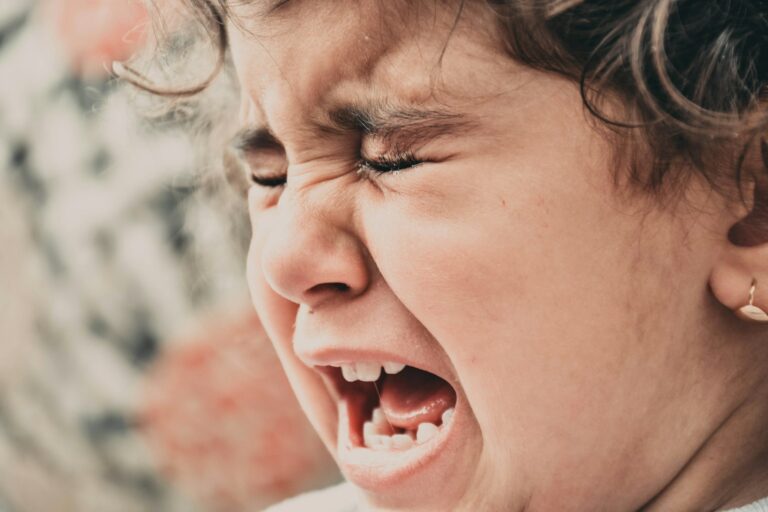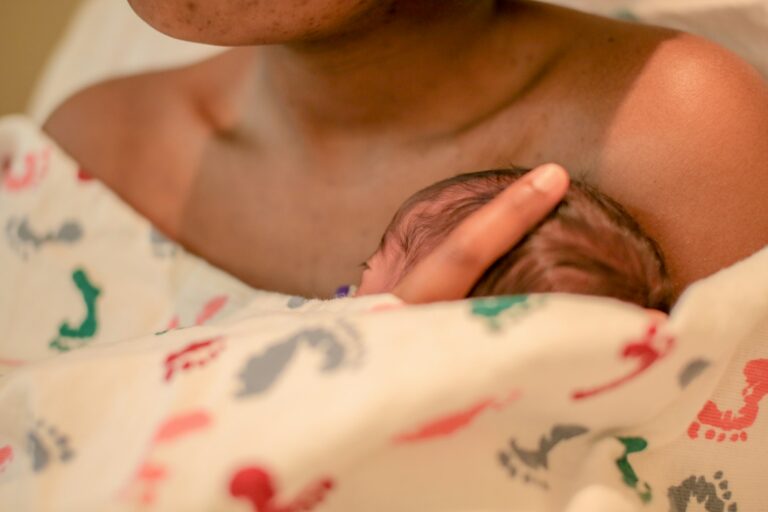Infant bronchiolitis—three syllables that can bring a wave of anxiety for parents when the first winter cough sweeps through the nursery. Suddenly, everything shifts: a simple runny nose morphs into rapid, noisy breaths; your usually voracious little feeder turns away, distracted by the effort of catching their breath. Many parents find themselves double-checking their child’s chest at night, counting breaths, searching for the smallest change in skin color, and asking the inevitable: is this just a cold, or something more? When the diagnosis is infant bronchiolitis, questions flood in. How serious can it get? What if my child is premature? Should hospital bags be packed, or will comfort at home be enough? Let’s clarify the science behind this common infection, explain its progression, and arm you with practical strategies and up-to-date medical knowledge—all while recognizing just how challenging this can be.
Understanding Infant Bronchiolitis: Why Breathing Gets Hard
What exactly is going on in the lungs during infant bronchiolitis? Imagine airways so tiny they are barely the width of a drinking straw. Now, add swelling, a sticky mucus plug, and a virus—usually the respiratory syncytial virus (RSV)—which sets the stage for a cascade of respiratory symptoms. These airways, called bronchioles, are particularly vulnerable in infants due to their narrow diameter and developing immune systems.
The virus attacks the lining of these bronchioles, triggering inflammation and thickening of their walls. As the body tries to fight off the invader, mucus production surges, which, though meant as a protective mechanism, often works against small lungs. Air gets trapped, breathing becomes shallow and fast, and in the most severe cases, oxygen levels dip—a state known as hypoxemia. This physiological disruption explains why infants, especially those between 2 and 6 months, are at the highest risk.
A key detail: bronchiolitis is not bronchitis. While bronchitis involves larger airways and is more typical in older children and adults, infant bronchiolitis affects the very smallest passages, making the disease course and risks distinctly different. Sometimes, the lines blur—cough, fever, noisy chest—but the mechanics and consequences in infants require their own set of management tools.
Recognizing the Symptoms: From Subtle to Severe
The earliest moments of infant bronchiolitis can look deceptively mild. Runny nose? Yes. Low-grade fever? Likely. A cough that is first dry before turning wet—common. As the hours tick by, however, the pattern shifts: breathing accelerates (tachypnea), the belly and chest work hard with every inhale, and a soft “whistling” or wheezing noise weaves through each breath. Some infants may pause between breaths—a worrisome symptom called apnea—and feeding time becomes a battle against fatigue.
Watch for these indicators:
- Rapid breathing (over 60 breaths per minute)
- Flared nostrils with each breath (“nasal flaring”)
- Drawing in of skin around the ribs (retractions)
- Lethargy or difficulty staying awake
- Bluish lips or fingertips (cyanosis)
- Reduced appetite, fewer wet diapers, or a dry mouth—all signs of dehydration
Parents often wonder: When do these symptoms warrant a call for help? Difficulty arousing your baby, persistent vomiting around feeds, or labored, irregular breathing are signs to seek immediate assessment.
Causes and Contagion: Why Winter Is High Season
While RSV holds the spotlight for most cases of infant bronchiolitis, it is not the only offender. Human metapneumovirus, parainfluenza virus, rhinovirus, adenovirus, and even certain strains of influenza have all been identified as triggers. These viruses pass quickly through crowded environments—think daycares and playgroups—hitchhiking on respiratory droplets expelled by a sneeze or cough. Surfaces, toys, even a caregiver’s hands can become silent reservoirs; a baby’s curiosity, and tendency to touch their face constantly, only accelerates exposure.
Certain infants bear a heavier burden:
- Those under 3 months old, simply because their airways are so small
- Premature babies, particularly with a gestational age under 29 weeks
- Infants with underlying chronic lung disease or congenital heart disease
- Babies exposed to tobacco smoke, due to increased airway reactivity and decreased clearance of mucus
- Children in crowded homes or with older siblings who bring home germs
Seasonal patterns are striking—most outbreaks occur in winter and early spring, but in some tropical areas, surges align with rainy periods. Once an outbreak begins, incidence can skyrocket, sometimes overwhelming health services.
Diagnosing Infant Bronchiolitis: The Doctor’s Toolbox
How do healthcare providers distinguish infant bronchiolitis from other causes of respiratory distress? The answer lies more in observation than in a suite of exhaustive tests. Diagnosis is based on:
- Careful clinical history (recent cold symptoms, feeding changes)
- Listening for chest noise—wheezing and fine crackles are typical
- Measuring oxygen levels using a pulse oximeter (a tiny probe placed on baby’s toe or finger)
- Assessing hydration and the ability to feed
Laboratory tests—like nasopharyngeal swabs to identify RSV or other viruses—might be used in some cases, especially to help with infection control decisions in hospital settings. Chest X-rays and bloodwork are reserved for more complex situations, such as when pneumonia is suspected, or a baby isn’t improving as expected.
Key point for parents: Rapid, accurate diagnosis doesn’t always require invasive investigations.
Management Strategies: What Really Helps Infants Recover
Parents frequently search for immediate solutions—Is there a medicine? What about a nebulizer? Should antibiotics be started “just in case”? The science is clear: supportive care reigns supreme in infant bronchiolitis.
Here are the pillars of home care:
- Prioritize hydration: Offer small, frequent feeds; for breastfed babies, allow shorter feeds more often.
- Relieve nasal congestion with saline nose drops and gentle suction, especially before feeding and sleep.
- Keep the environment smoke-free, clean, and comfortably humidified.
- Allow restful sleep and avoid unnecessary interruptions.
- Use acetaminophen for fever, but be wary of over-medicating.
Hospitalization becomes necessary if a child exhibits persistent low oxygen saturations (under 92%), has sustained trouble feeding, or shows escalating respiratory distress. High-risk infants—premature, less than three months old, or with health issues—are more frequently admitted for closer observation.
A point of reassurance: Antibiotics aren’t routinely needed, as the infection is viral. Bronchodilators (inhalers or nebulizers), often given to older children or adults with asthma, have not shown consistent benefit in large studies for bronchiolitis. Corticosteroids and chest physiotherapy are similarly not routinely recommended unless another diagnosis is suspected. Sometimes, less intervention is more effective—science backs this up.
In severe situations, advanced respiratory support—like high-flow nasal cannula or mechanical ventilation—may be required. Specialized pediatric teams are well equipped to make these decisions based on your child’s needs.
Complications: What Parents Should Watch For
Short-term complications include:
- Escalating respiratory distress
- Apnea (breathing pauses), particularly in the youngest infants
- Dehydration due to poor feeding
- Rarely, respiratory failure requiring intensive support
Secondary infections such as pneumonia or otitis media (ear infections) can occur. Looking further ahead, families sometimes ask if infant bronchiolitis predisposes children to asthma. The link is complex—while repeated wheezing episodes and underlying family history of allergy appear connected, most children recover fully without ongoing issues.
Special consideration is warranted for infants who are born prematurely or have chronic conditions; these children benefit the most from early intervention and preventive strategies.
Prevention Tactics: Shielding Babies from Infection
What can actually reduce the risk of infant bronchiolitis? Prevention relies on routine but powerful actions:
- Frequent handwashing—perhaps the simplest, most effective protection
- Disinfecting toys, pacifiers, and commonly touched surfaces
- Keeping indoor air quality high and homes smoke-free
- Avoiding crowded spaces, particularly during peak RSV season
- Wearing a mask when caring for a baby if you’re unwell
- Public health interventions—community-level vaccination, educational campaigns, and robust hygiene in daycare settings
Recent medical advances offer extra protection for high-risk infants. Maternal vaccination during pregnancy against RSV can grant newborns temporary immunity. Newer monoclonal antibody therapies (nirsevimab) now extend passive immunity beyond what older treatments offered, making a significant dent in severe case numbers among the most vulnerable babies.
Prognosis: What to Expect as Recovery Unfolds
Most infants bounce back within 7 to 10 days, although a cough or slight wheeze may linger several weeks. Individual recovery depends on a mosaic of factors: age, gestational maturity, pre-existing health, and the virus involved. The first episode is usually the most severe. Though repeat infections can happen, especially with RSV, they tend to be milder.
Long-term lung damage is rare in otherwise healthy babies, but ongoing monitoring is wise in those with a family history of asthma or atopic conditions such as eczema.
Caregiver Advice: Balancing Caution with Confidence
How can parents support recovery at home—or tell when the situation has moved beyond simple home support? Focus on hydration, offer gentle nasal care, and use humidified air as needed. Keep the living space as free of irritants as possible. Above all, observe—babies will cue you, sometimes subtly, if their breathing is harder, or if feeds become battles rather than comfort.
Seek medical attention if your baby:
- Develops pauses in breathing or turns blue (cyanosis)
- Breathes with visible effort, very quickly, or irregularly
- Is lethargic, difficult to rouse, or persistently vomits
- Has trouble feeding or shows signs of dehydration (no tears when crying, a dry mouth, fewer wet diapers)
Feeling overwhelmed is understandable—infant bronchiolitis, while common, tests even the most seasoned caregivers. Engage your healthcare providers early and use reliable resources. Connecting with parent groups or digital tools can bring not only guidance but reassurance.
Key Takeaways
- Infant bronchiolitis is a frequent, contagious viral illness peaking in winter, often affecting infants under two years old, with RSV as the lead culprit.
- Prevention is built on practical, daily actions: clean hands, smoke-free environments, and minimized exposure to sick contacts.
- Supportive care at home is the cornerstone of recovery; unnecessary medications offer little added benefit and should be avoided unless prescribed.
- Warning signs—difficulty breathing, bluish coloring, poor feeding, or lethargy—signal the need for urgent assessment.
- Ongoing research and new preventive treatments have improved outcomes, especially for babies at greatest risk.
- Reliable resources and professionals are available to support parent decision-making at every step.
- For ongoing guidance and tailored support, download the Heloa app for free health questionnaires and practical advice for your child’s wellbeing.
Questions Parents Ask
Can bronchiolitis be prevented from recurring in future seasons?
It’s completely understandable to want to shield your little one from repeated illnesses. While it’s not always possible to prevent bronchiolitis from happening again, you can certainly lower the risk. Regular handwashing, gently cleaning toys and surfaces, and limiting your baby’s contact with people showing signs of a cold are all helpful steps. For infants at higher risk, such as those born prematurely or with certain health conditions, some medications may be considered for added protection—your healthcare provider can guide you on this if necessary. Public health recommendations and new preventive therapies are also evolving to offer more options.
Is bronchiolitis contagious, and how long should a baby stay home from daycare?
Bronchiolitis spreads easily, especially in group settings like daycares, because the viruses involved travel via droplets from coughing or sneezing and can survive on hands and surfaces. To help protect other children, your baby should stay home until their fever is gone, symptoms have improved, and they are well enough to participate comfortably in group activities. In general, keeping them home for about a week after symptoms begin, or as advised by your healthcare provider, can make a real difference in reducing the spread.
Does bronchiolitis increase the risk of developing asthma later on?
Many parents worry about the long-term effects of bronchiolitis and whether it could lead to asthma. Studies show that some children who have had bronchiolitis, especially those with severe symptoms during infancy or with a family history of allergies, may wheeze more in the years that follow. However, most children go on to have normal lung health, and the majority do not develop asthma. If you have any concerns about ongoing breathing issues or persistent wheezing, discussing them with your healthcare provider can provide reassurance and thoughtful follow-up.
Further reading:









